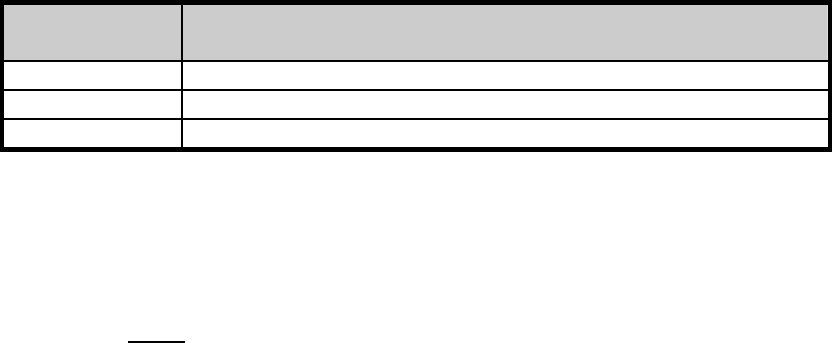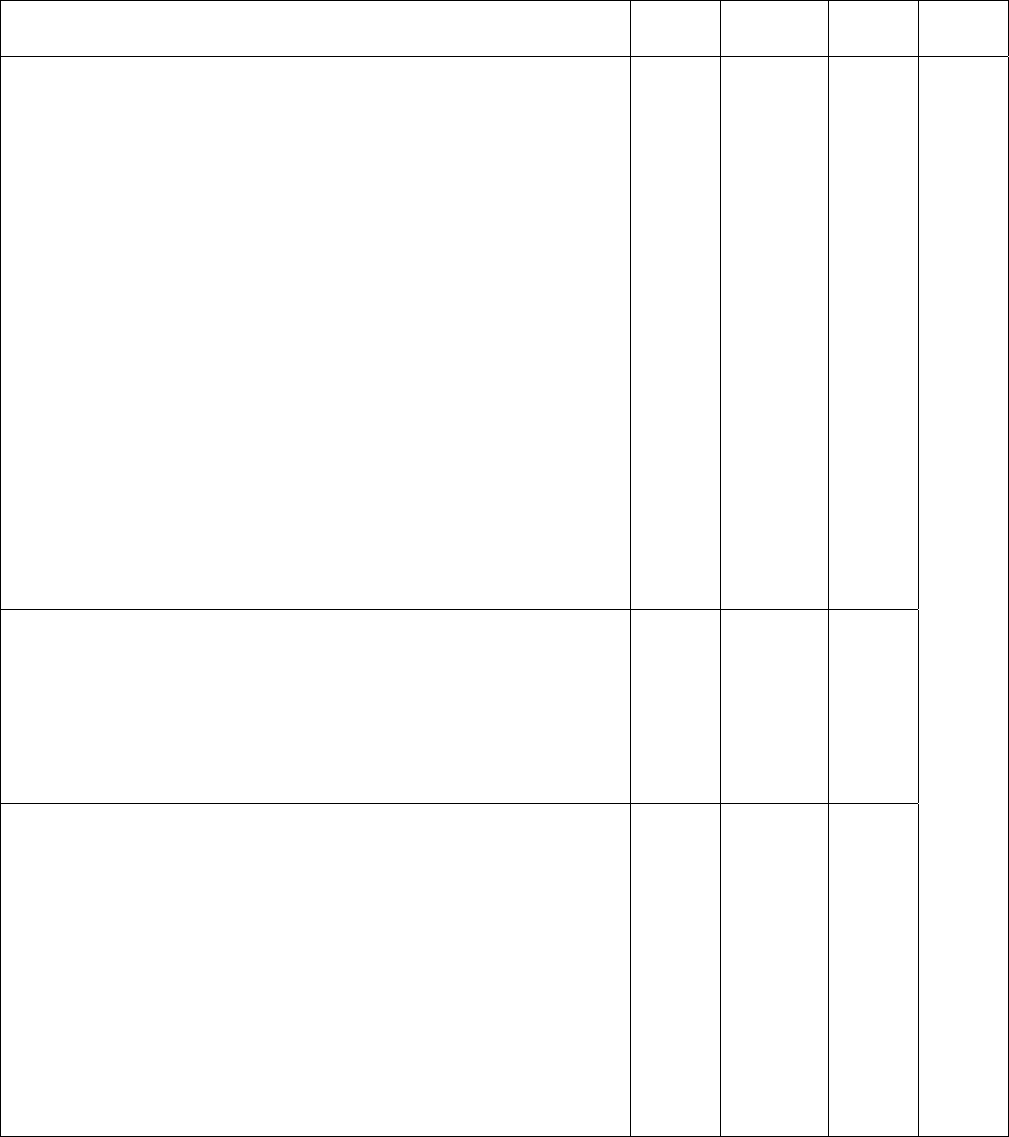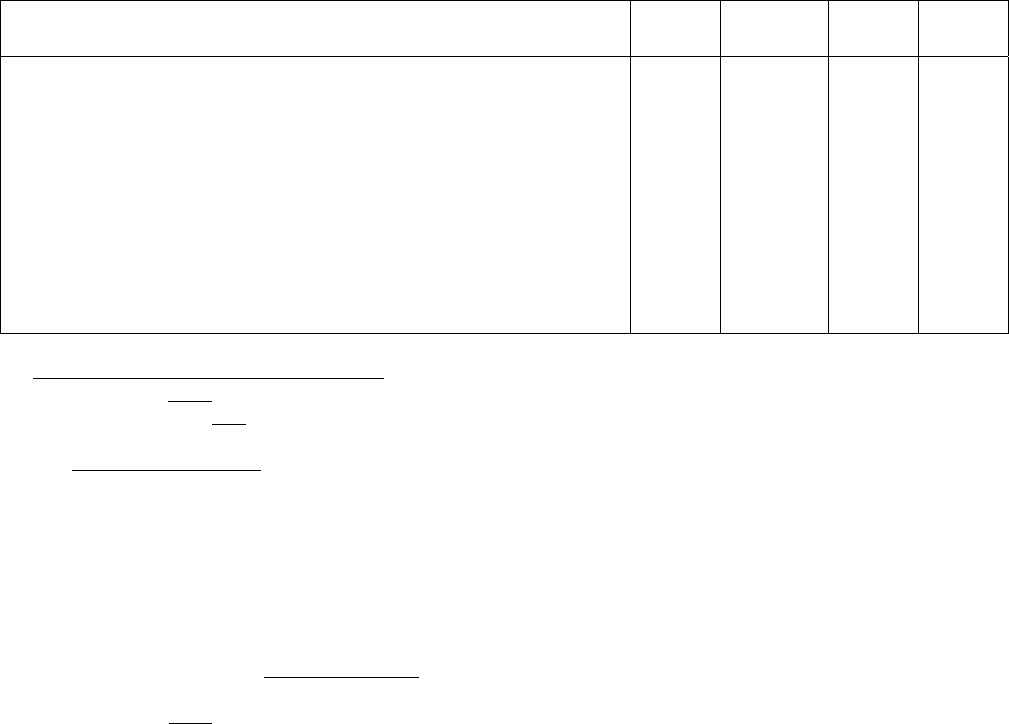
Baking & Pastry Arts
COURSE OUTLINE
1. Course Title: Baking & Pastry Arts
2. CBEDS Title: Food and Hospitality Services
3. CBEDS Number: 4420
4. Job Titles:
Food Service Worker Baker
Pastry Chef Assistant Pastry Chef
Food Processing Worker
5. Course Description: This course is designed to educate students in the art of Baking and
Pastry Arts. Students will learn the basics of mixing, shaping and baking for several
baked goods including quick breads, cakes, pastry doughs, mousses, sauces, glazes,
cookies, candies and confections. Plated desserts, international baked foods, chocolate
work and decorated cakes are highlighted. In addition, students will be introduced to
decorating techniques. Students will learn in a well-equipped, modern kitchen and also
prepare food for school functions and community service events. This course includes
classroom instruction and practical lab work in a commercial kitchen
Student Outcomes and Objectives:
Students will:
1. Be introduced to the following: commercial baking equipment, quantity baking and
specialty ingredients, breads, laminated doughs, quick breads, cakes, creams & mousses,
meringue, dessert buffet, custards, dessert soufflés, dessert sauces, frozen desserts, plated
desserts, confections, candy and sugar work, chocolate desserts and candies, holiday
desserts.
2. Prepare the above listed baking and pastry items for various foods production events.
3. Plating and presentation will be emphasized in baking productions.
4. Be introduced to careers in the culinary and hospitality fields through research, visits
from professional chefs and other food professionals, job shadowing, internships and
field trips.
5. The student will learn about the history and background of international desserts and
baked foods.
Pathway
Recommended
Sequence
Courses
Introductory
Culinary Arts
Skill Building
Advanced Culinary Arts and/or Baking and Pastry Arts
Advanced Skill
Culinary Arts Cooperative
6. Hours: Students receive up to 180 hours of classroom instruction.
7. Prerequisites: None
8. Date (of creation/revision): July 2010

9. Course Outline
COURSE OUTLINE
Upon successful completion of this course, students will be able to demonstrate the following skills necessary for entry-
level employment.
Instructional Units and Competencies
Course
Hours
Model Curr.
Standards
CA
Academic
Content
Standard
s
CAHSEE
I. CAREER PREPARATION STANDARDS
A. Career Planning and Management.
1. Know the personal qualifications, interests, aptitudes,
knowledge, and skills necessary to succeed in careers.
a. Students will identify skills needed for job success
b. Students will identify the education and experience
required for moving along a career ladder.
2. Understand the scope of career opportunities and know the
requirements for education, training, and licensure.
a. Students will describe how to find a job.
b. Students will select two jobs in the field and map out a
timeline for completing education and/or licensing
requirements.
3. Develop a career plan that is designed to reflect career
interests, pathways, and postsecondary options.
a. Students will conduct a self—assessment and explain
how professional qualifications affect career choices.
4. Understand the role and function of professional
organizations, industry associations, and organized labor
in a productive society.
a. Contact two professional organization and identify the
steps to become a member.
5. Understand the past, present and future trends that affect
careers, such as technological developments and societal
trends, and the resulting need for lifelong learning.
a. Students will describe careers in the building trades
construction industry sector.
b. Students will identify work-related cultural
differences to prepare for a global workplace.
6. Know the main strategies for self-promotion in the hiring
process, such as completing job applications, resume
writing, interviewing skills, and preparing a portfolio.
a. Students will write and key a resume, cover letters,
thank you letters, and job applications.
b. Students will participate in mock job interviews.
B. Technology.
1. Understand past, present and future technological advances
as they relate to a chosen pathway.
2. Understand the use of technological resources to gain
access to, manipulate, and produce information, products
and services.
3. Understand the influence of current and emerging
technology on selected segments of the economy.
4. Use appropriate technology in the chosen career pathway.
C. Problem solving and Critical Thinking.
1. Apply appropriate problem-solving strategies and critical
thinking to work-related issues and tasks.
2. Understand the systematic problem-solving models that
incorporate input, process, outcome and feedback
components.
3. Use critical thinking skills to make informed decisions
22
Additional
hours are
integrated
throughout
the
course.
Hospitality,
Tourism, &
Recreation
Industry
Sector,
Model
Curriculum
Standards
3.0, 4.0, 5.0,
6.0, 7.0, 8.0,
9.0, 10.0
Language
Arts
(8)
R 1.3, 2.6
W1.3, 2.5.
LC 1.4,1.5
,
1.6
LS1.2, 1.3,
(9/10)
R2.1,2.3,
2
W2.5
LC1.4
LS 1.1, 2.3
(11/12)
R2.3
W2.5
LC1.2
Math
(7) NS1.2,
1.7
MR 1.1,1.
3
2.7,2.8, 3.
1
Lang.
Arts
R 8.2.1
(9/10)
R 2.1,
2.3
W2.5
Math
(7)
NS 1.2,
1.3, 1.7
MR 1.1,
2.1, 3.1

and solve problems.
4. Apply decision-making skills to achieve balance in the
multiple roles of personal, home, work and community
life.
D. Health and Safety.
1. Know policies, procedures, and regulations regarding
health and safety in the workplace, including employers’
and employees’ responsibilities.
2. Understand critical elements of health and safety practices
related to storing, cleaning and maintaining tools,
equipment, and supplies.
E. Responsibility & Flexibility.
1. Understand the qualities and behaviors that constitute a
positive and professional work demeanor.
2. Understand the importance of accountability and
responsibility in fulfilling personal, community, and work-
place roles.
3. Understand the need to adapt to varied roles and
responsibilities.
4. Understand that individual actions can affect the larger
community.
F. Ethics and Legal Responsibilities
1. Know the major local, district, state, and federal regulatory
agencies and entities that affect the industry and how they
enforce laws and regulations.
2. Understand the concept and application of ethical and legal
behavior consistent with workplace standards.
a. Contact a business and obtain a copy of their rules for
employment.
b. Role play difference ethical scenarios.
3. Understand the role of personal integrity and ethical
behavior in the workplace.
G. Leadership and Teamwork.
1. Understand the characteristics and benefits of teamwork,
leadership, citizenship in the school, community, and
workplace settings.
2. Understand the ways in which professional associations,
such as the American Restaurant Assn., the International
Hotel and Restaurant Assn., and other hospitality
associations and competitive career development
activities enhance academic skills, career choices, and
contribute to promote employability.
3. Understand how to organize and structure work
individually and in teams for effective performance and
attainment of goals.
4. Know multiple approaches to conflict resolution and their
appropriateness for a variety of situations in the workplace.
5. Understand how to interact with others in ways that
demonstrate respect for individual and cultural differences
and for the attitudes and feelings of others.

Instructional Units and Competencies
Hours Model Curr.
Standards.
CA
Academic
Standards
CAHSEE
I Hygiene
A. Display Neat Appearance
B. Demonstrate Hygienic Practices in Food
Preparation
C. Maintain a Sanitary Kitchen and Dining Area
D. Food Care and Storage
E. Sanitary Method of Hand Washing
F. List Prevention of Food-Borne Illness
10
Food Svc.&
Hospitality
Pathway
B3.2
B3.3
B3.4
ELA
11-12;
R; 1.0,
1.1.-1.3,
2.0, 2.1-
2.6
W; 1.0;
1.1-1.5,
1.6-1.8,
1.9, 2.0,
2.1-2.6
WO, 1.0
S. 9-12;
Chem;
6a
II. Safety and Sanitation
A. Maintain Safe Work Environment
B. Exhibit Competence of Accident Prevention, i.e.,
burns, falls, cuts, etc.
C. Proper Storage of Chemicals and Cleaning Supplies
15
Food Svc.&
Hospitality
Pathway
B2.1
B2.2
III. Equipment and Utensils
A. Identification, Care and Safe Use of Utensils and
tools
B. Identification of Equipment
C. Care and Safe Use of Equipment
1. Commercial Ovens and Grills
2. Commercial Dish Machines
3. Hobart Mixer and Attachments
4. Kitchen Knives
5. Food Processor
20
Food Svc.&
Hospitality
Pathway
B6.2
ELA 9-
10; R;
2.6
WO;
1.3,1.4
LS;
1.3,1.7,
1.9
ELA 9-
10; R;
1.1, 1.2
W; 1.1-
1.6, 1.9
WO; 1.1-
1.3, 1.5

IV. Baking Mise en Place and Yeast Doughs
A. The functions of basic ingredients in baking
a. Strengtheners
b. Shorteners
c. Sweeteners
d. Leaveners
e. Thickeners
f. Flavorings
B. Techniques used to prepare ingredients and
equipment.
a. Scaling
b. Sifting dry ingredients
c. Selecting and preparing pans and molds
d. Selecting and preparing ovens
C. Yeast Breads
a. Mixing Yeast Doughs
i. Mise En Place for yeast doughs
ii. Method
b. Shaping Doughs
i. The final rise/pan-proofing
ii. Docking breads and rolls
c. Baking yeast breads
d. Cooling and storing yeast breads
D. Laminated Doughs
30
Food Svc.&
Hospitality
Pathway
B6.3
B6.4
B7.3
ELA 11-
12; R;
1.1-1.3,
2.1, 2.2-
2.5, 2.6;
LS; 1.1,
1.2
M. 7, NS;
1.3
MG; 1.1
V. Batters
B. Quick Breads, Cakes, and Other Batters
a. Straight mix method
b. The creaming method
c. The two-stage method
d. The foaming method
C. Mixing methods for other batters and doughs
a. Biscuits, Scones, and Soda Bread
25
Food Svc.&
Hospitality
Pathway
B7.0
B7.3
S. 9-12;
Chem.; 6c
ELA 9-
10; R;
1.1-1.2,
2.1-2.5,
2.7
W; 1.1-
1.6, 1.9,
2.1-2.5
WO; 1.1-
1.3, 1.5
M 9-12;
Alg. 1;
4.0-6.0,
9.0

Instructional Units and Competencies
Hours Model Curr.
Standards.
CA
Academic
Standards
CAHSEE
VI. Pastry Dough
A. Basic Pie Dough
i. Pâte sucreé
ii. Pâte brissé
a. Preparing Pies and Tarts
1. Lining a Pie Plate or Tart Mold
2. Baking Blind
3. Fillings for Pies and Tarts
4. Topping Pies and Tarts
5. Baking Pies and Tarts
B. Roll-in Doughs
a. Doughs with Separate Roll-ins
C. Sidebar Handling Roll-In Doughs
a. Method for Blitz Puff Pastry
b. Rolling, Folding and Shaping the
Finished Dough
1. Handling Method for Phyllo
Dough
2. Fillings for Pastries
D. Pâte à Choux
25
Food Svc.&
Hospitality
Pathway
B7.0
B7.1
B7.4
S. 9-12;
Chem.; 6c
VII. Creams, Bavarians, and Mousses
A. Vanilla Sauce
B. Pastry Cream
C. Bavarian Creams
D. Mousse
E. Buttercreams
a. Two Basic Methods
15
Food Svc.&
Hospitality
Pathway
B7.0
B7.1
B7.4
S. 9-12;
Chem.;
6c, 6d
VIII. Sauces, Glazes, and Frozen Desserts
A. Chocolate Sauce
B. Syrups and glazes
C. Fruit Sauces
D. Caramel/Butterscotch Sauces
E. Sabayon (Zabaglione)
F. Fruit Curds
G. Frozen Desserts
a. Frozen Soufflés and Mousses
b. Ice Cream and Gelato
c. Sorbets and Sherbets
d. Granité
15
Food Svc.&
Hospitality
Pathway
B7.1
B7.4
S. 9-12;
Chem.;
6c, 6d

Instructional Units and Competencies
Hours Model Curr.
Standards.
CA
Academic
Standards
CAHSEE
IX. Cookies, Candies, and Dessert Assembly, Plating and
Presentation
A. Simple Cookies, Candies, and Confections
a. Preparing Cookies and Other Small Pastries
B. Special Tools and Techniques for Decorating
Pastries and Cakes
a. Parchment Cones
b. Pastry Bags and Tips
c. Assembling and Decorating Cakes
d. Sidebar Decorating Tips for Cakes
15
Food Svc.&
Hospitality
Pathway
B6.5
B7.0
B7.4
S. 9-12;
Chem.; 6c
10. Additional recommended/optional items
a. Articulation: None
b. Academic credit: N/A
c. Instructional strategies:
Methods of Instruction:
a. Lecture and Discussion
b. Demonstrations
c. Lab projects and Analysis
d. Research and Reports
e. Use of Available Audiovisual Materials
f. Community Resources (speakers)
g. Field Trips
h. Catering Events
d. Instructional materials:
Culinary Essentials; Johnson & Wales University; Glencoe McGraw-Hill 2002
e. Certificates: None
